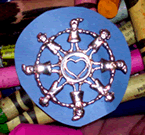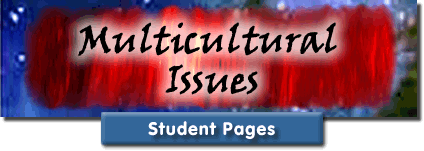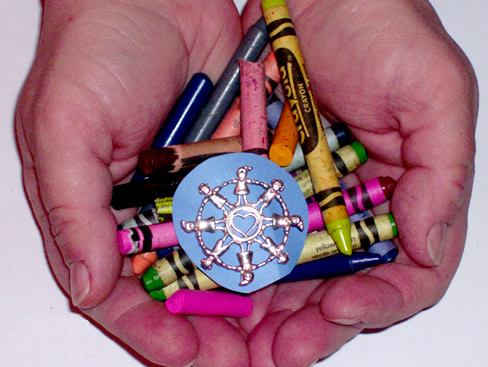|
|

•
•
•
•
•
•
•
•
•
•
•
•
•
•
•
•
•
•
•
•
•
•
•
•
•

|
|


My HandsJames Banks identifies 12 essential principles for teaching and learning in a multicultural society in Diversity Within Unity. These principles involve teacher and student learning, intergroup relations, school governance, and assessment. My logo represents who I am and what I believe as a multicultural educator. My logo description shows how my philosophy aligns with many of Banks’ principles. The hands belong to me. These are the hands of a teacher, parent, and one who encourages learning and extra-curricular opportunities. Banks’ fourth principle states that all students should be given these extra-curricular opportunities. These opportunities are richer, deeper, and more rewarding when they include interaction with diverse groups of people. They are cupped together and symbolize giving or holding out what I have to offer. Banks’ second principle says that all students should be given equitable opportunities to learn. As an educator, I can give equitable opportunities that are influenced by my own unique experiences. According to Banks’ third principle, students should understand that knowledge is socially constructed and reflects this unique experience as well as the unique experiences of other educators and researchers. My hands are also held out to symbolize receiving. Banks’ first principle encourages professional development that helps teachers understand the characteristics of diverse ethnicities. I am open to new experiences and ideas that differ from my own. This allows me to enrich and build upon the foundation of my own culture. The pin was given to me while I worked in social work. I was told it represents acceptance of ALL children. The pin shows all children joined together holding hands. Love exists within their circle. Where there is love there is no room for prejudice or stereotyping. The sixth principle of Banks states that students should learn about how stereotyping can cause negative outcomes. The crayons represent everyone. There are old crayons and newer ones representing all ages. There are many colors representing all genders, races and cultures of people. These crayons were selected randomly to be held in my hand (the fair and judicious way to do it). I did not hand-select them to fit a quota. Some of the crayons are without their paper, some broken, some used. This represents everyone … differences in physical abilities, socio-economics, mental health, family dynamics, history, etc. Also, crayons are a tool young children use as they begin the journey into their school years. This tool is provided to all children — just as all educational tools, funding, assessment, and decisions should continue to be provided or be beneficial to all. Banks shares these values in his final two principles, eleven and twelve, where he addresses the importance of equitable funding and culturally-sensitive assessment in education. To me the individual crayons bring their unique hue, but when combined with others create something more beautiful. It takes many colors to make a masterpiece. January 26, 2009
A is for advocate
B is for broken, battered or bruised
C is for ch’i
D is for disability
E is for empathy
F is for family
G is for goals
H is for Higgins
I is for Irish and Indian
J is for Jenny
K is for Karma
L is for ladder
M is for military
N is for needs
O is for optimistic
P is for promise
Q is for quarter
R is for Rogers
S is for seven
T is for Türkiye
V is for variable
W is for worth
X is for xenial
Y is for yin & yang
Z is for zuche
February 27, 2009
For a printer-friendly copy
For a printer-friendly copy
|
|
|


